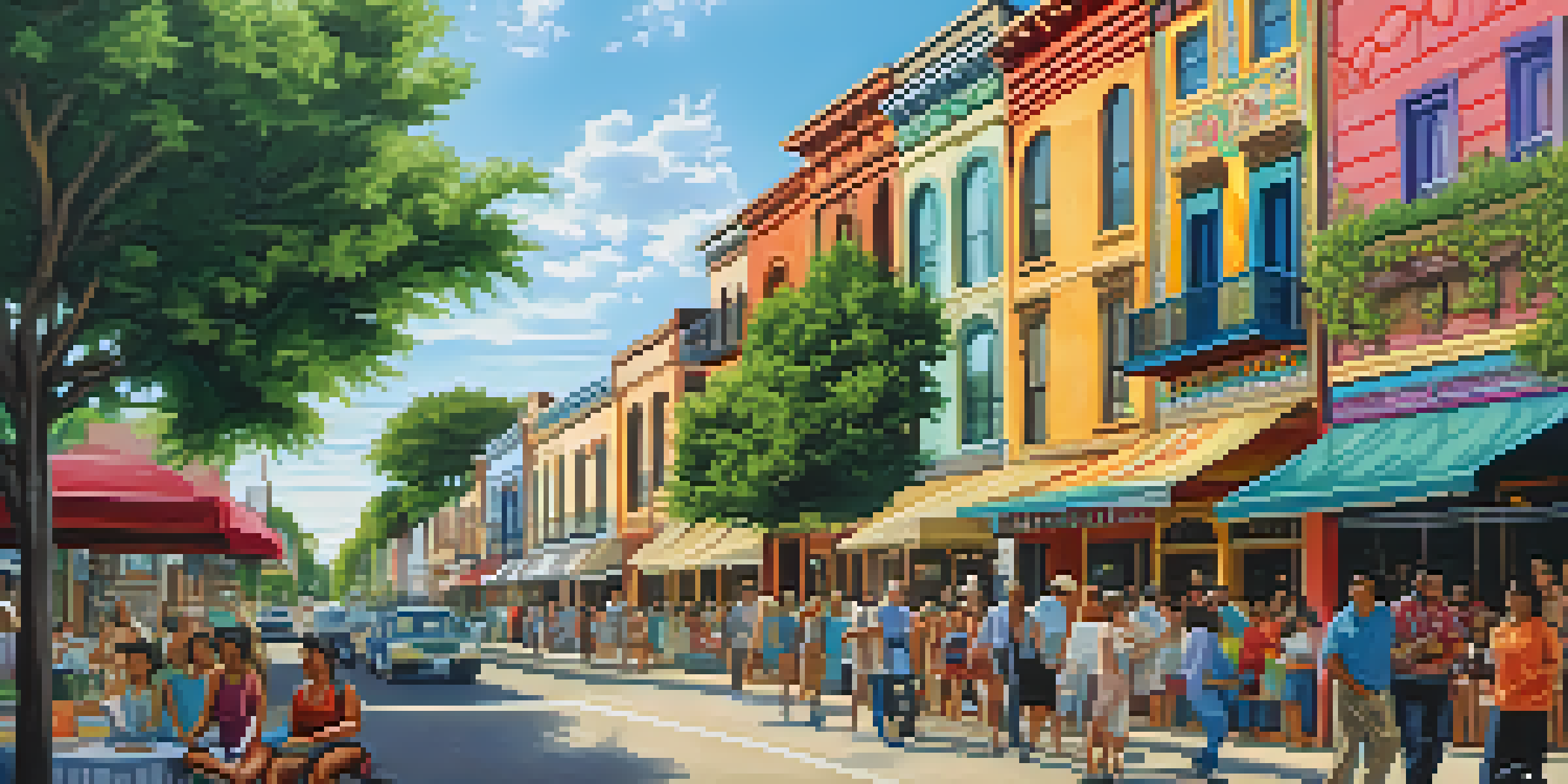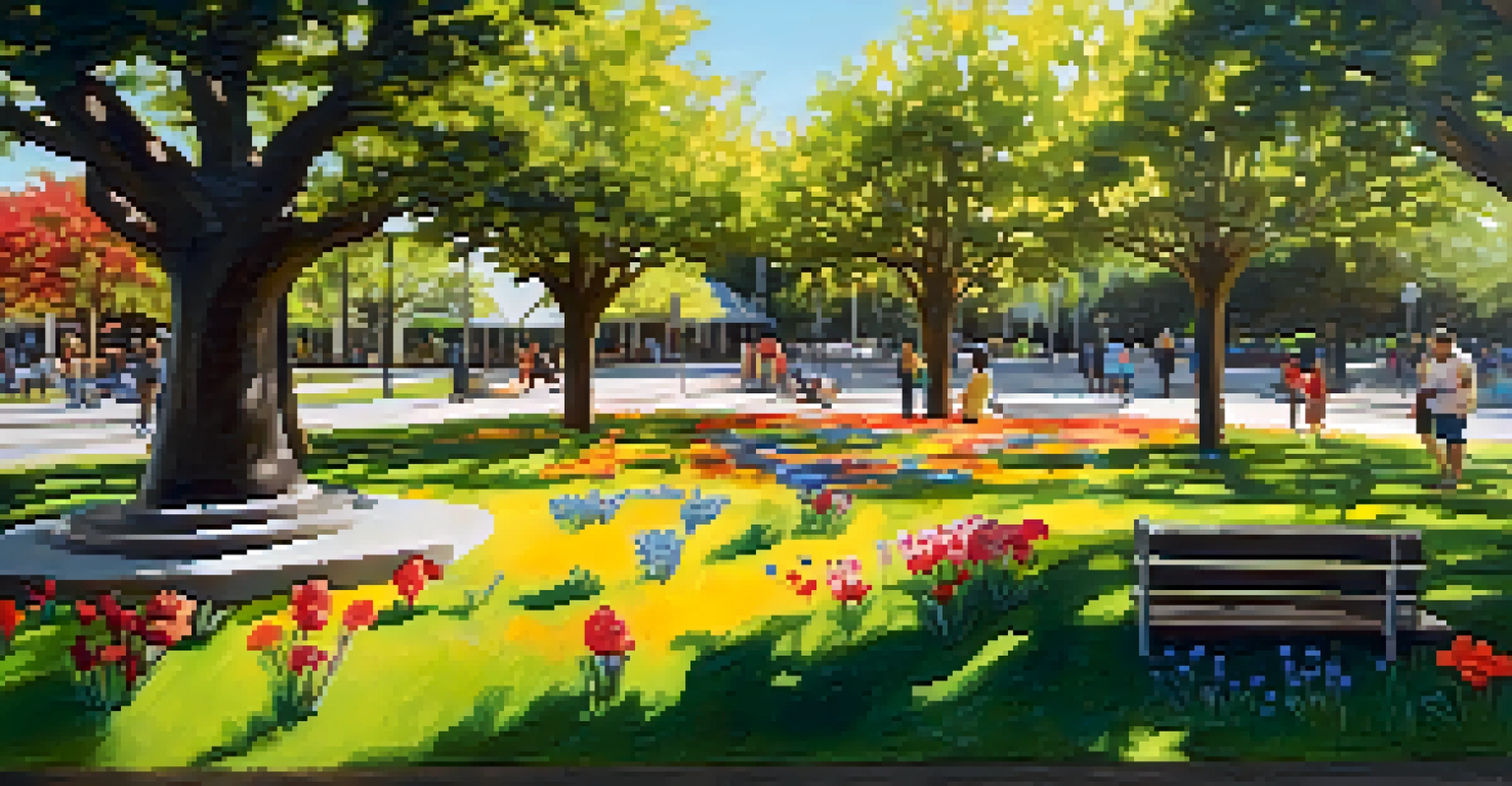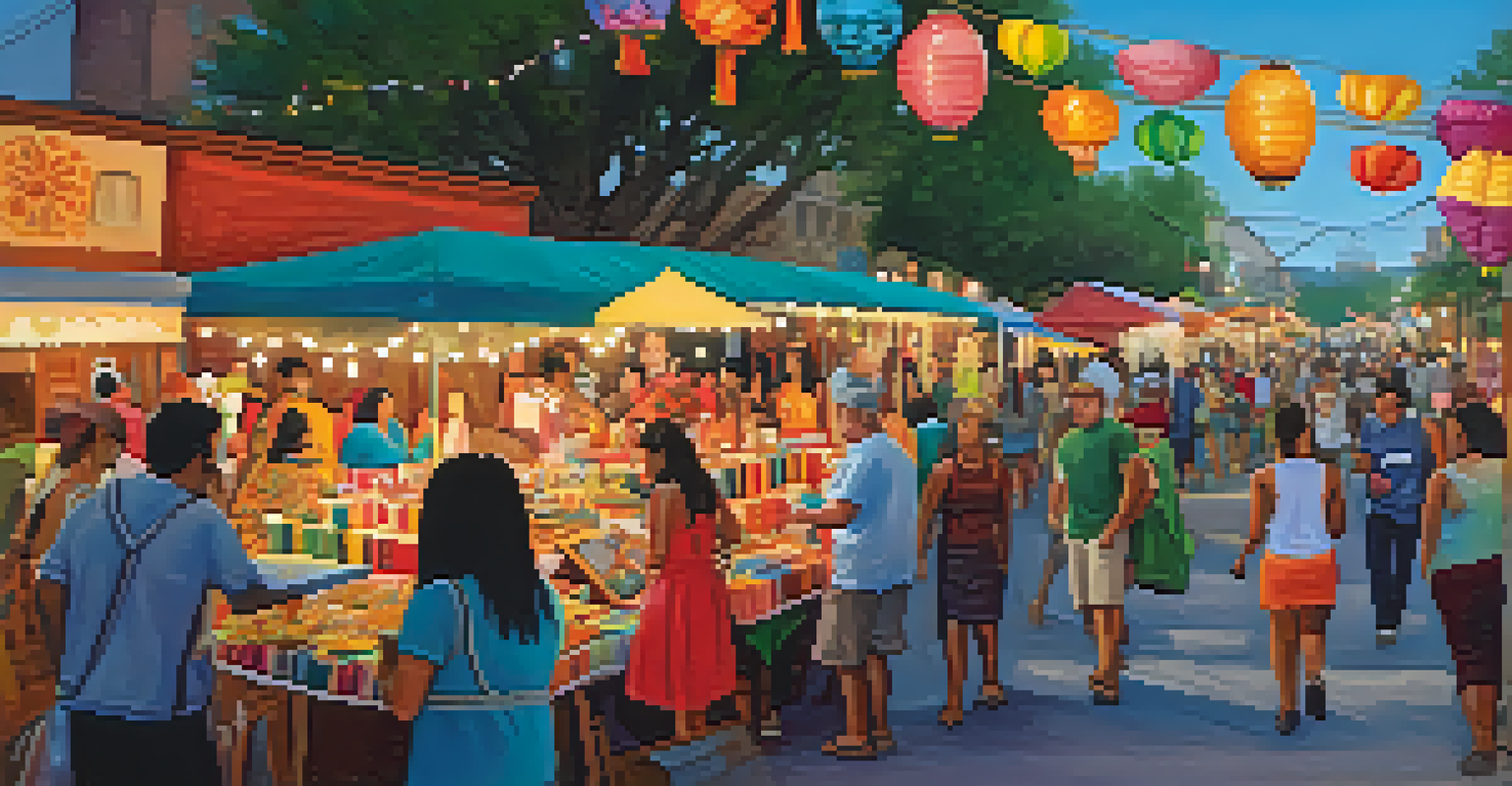The Role of Public Art in San Antonio's Urban Landscape

Understanding Public Art and Its Importance
Public art encompasses a wide range of artistic expressions found in public spaces, from murals to sculptures. It plays a crucial role in enhancing the visual appeal of urban areas, making cities more inviting and culturally rich. In San Antonio, public art serves not only as decoration but also as a medium for storytelling and community engagement.
Public art should be part of the conversation about public space. It can be a way to engage communities and foster a sense of belonging.
One of the fascinating aspects of public art is its accessibility; anyone can experience it without needing a ticket or reservation. This democratization of art encourages a diverse audience to engage with creative works, fostering a sense of belonging and pride among residents. For many, these artworks become landmarks, imbuing spaces with character and identity.
Moreover, public art can spark conversations about social issues, history, and culture, prompting reflection and discussion among community members. By providing a platform for underrepresented voices, it can challenge perceptions and inspire change, making it a vital component of urban development in San Antonio.
Historical Context of Public Art in San Antonio
San Antonio's relationship with public art dates back centuries, influenced by its rich cultural heritage. From the Spanish colonial period to contemporary times, art has reflected the city's evolving identity. This historical context gives depth to the public art we see today, as many pieces draw inspiration from the city's diverse cultural tapestry.

One notable example is the murals in the historic West Side, which tell the stories of the local community and its heritage. These vibrant artworks not only beautify the area but also serve as a reminder of the struggles and triumphs that shape San Antonio's narrative. Through this lens, public art becomes a living history lesson for both residents and visitors.
Public Art Enhances Urban Identity
Public art transforms spaces in San Antonio, fostering community pride and reflecting the city's diverse cultural heritage.
Additionally, events like Fiesta San Antonio celebrate local artists, providing them with a platform to showcase their work in public spaces. This ongoing commitment to art and culture ensures that the city remains a lively canvas for creative expression, honoring its past while looking toward the future.
Public Art as a Catalyst for Community Engagement
Public art fosters community engagement by transforming ordinary spaces into interactive environments. When residents see familiar places adorned with artistic works, it can ignite pride and ownership over their surroundings. This sense of connection encourages people to participate in local events, discussions, and initiatives that promote community well-being.
Art is not a luxury; it is a necessity. It is a fundamental part of who we are as human beings.
Art installations often serve as gathering points, where people come together to celebrate culture, history, and creativity. For instance, the annual public art projects invite input from local artists and residents alike, ensuring that the artworks resonate with the community's values and aspirations. Such collaborative efforts can strengthen social ties and inspire collective action.
Moreover, public art has the power to break down barriers, uniting individuals from different backgrounds through shared experiences. By creating inclusive spaces where everyone feels welcome, San Antonio's public art contributes to a vibrant, cohesive community that thrives on diversity.
Economic Benefits of Public Art in Urban Areas
Investing in public art can yield significant economic benefits for cities like San Antonio. Attracting tourists and locals alike, these artistic installations can enhance foot traffic in neighborhoods, leading to increased sales for local businesses. When people come to admire a mural or sculpture, they often explore nearby shops and restaurants, boosting the local economy.
Additionally, public art can enhance property values by making areas more desirable. Beautifully designed public spaces encourage new developments and revitalization efforts, creating a ripple effect that stimulates economic growth. Developers and investors are increasingly recognizing the value of integrating art into urban planning, seeing it as a way to differentiate and elevate their projects.
Economic Boost from Public Art
Investing in public art attracts tourism and enhances local businesses, contributing to economic growth and increased property values.
Furthermore, public art initiatives can create job opportunities for local artists and artisans, contributing to the creative economy. By supporting and promoting local talent, San Antonio not only enriches its cultural landscape but also invests in the livelihoods of its residents.
The Role of Public Art in Urban Revitalization
Urban revitalization projects often hinge on the integration of public art, which breathes new life into neglected areas. By transforming dull, lifeless spaces into vibrant artistic havens, cities can attract investment and interest. In San Antonio, initiatives that include public art have successfully rejuvenated neighborhoods, fostering a renewed sense of community.
For example, the revitalization of the downtown area has included numerous art installations, making it a lively destination for both residents and tourists. These artworks not only beautify but also create a sense of identity and purpose for the urban landscape. They tell the story of the community's journey, making the area more relatable and engaging.
Moreover, public art can promote social equity by ensuring that underrepresented communities have a voice in the revitalization process. By involving local artists and residents in the creation of public works, cities can create spaces that reflect the diversity and vibrancy of their communities.
Challenges Faced by Public Art Initiatives
Despite its many benefits, public art initiatives in San Antonio face several challenges. One major hurdle is securing funding, as artistic projects often compete for budget allocation with other city needs. Without adequate financial support, many promising public art ideas may remain unrealized, leaving communities lacking in creative expression.
Additionally, navigating the permitting process can be daunting for artists and organizations looking to install public art. Bureaucratic obstacles and zoning regulations can slow down or even halt projects, frustrating artists and diminishing community enthusiasm. Streamlining these processes could facilitate more vibrant public art initiatives in the city.
Future of Public Art Looks Bright
Ongoing community involvement and emerging technologies will drive innovative public art projects that resonate with San Antonio's evolving identity.
Lastly, there can be resistance from certain community members who may not see the value in public art. Addressing these concerns through education and inclusive dialogue can help demonstrate the positive impact of art on urban spaces, fostering a more supportive environment for future initiatives.
The Future of Public Art in San Antonio
The future of public art in San Antonio looks promising, with ongoing efforts to expand and diversify artistic expressions across the city. As awareness of the benefits of public art continues to grow, so does the support for initiatives that enhance the urban landscape. This momentum paves the way for innovative projects that reflect the community's evolving identity.
Emerging technologies, such as augmented reality and interactive installations, are also making their way into the public art scene. These advancements can create immersive experiences that engage audiences in unique ways, capturing the interest of younger generations and drawing them into the conversation about public art.

Moreover, community involvement will remain a cornerstone of successful public art initiatives. By encouraging local participation and fostering collaboration between artists, city planners, and residents, San Antonio can ensure that its public art not only beautifies the landscape but also resonates with the diverse voices that shape its identity.